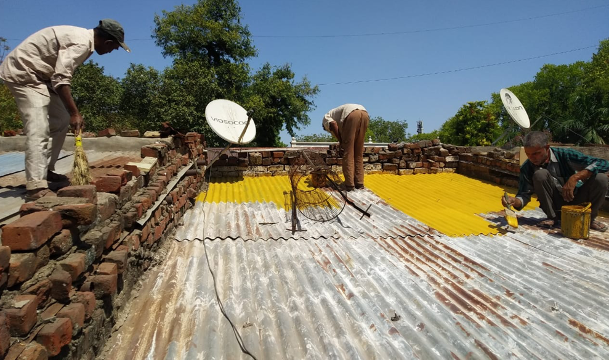Challenge
In 2010, the city of Ahmedabad, in the western India state of Gujarat, experienced a major heat wave. Locally, there was an excess of 1,344 all-cause deaths in one month (May 2010) (Azhar et al. 2014). Following the 2010 heat wave, the Ahmedabad Municipal Corporation (or AMC), partnered with IIPH-G and the NRDC to develop a plan to reduce the health impact of such extreme heat waves on vulnerable populations (Knowlton et al., 2014). The city launched its Heat Action Plan (or HAP) in 2013, the first such municipal plan in South Asia. Since then, Ahmedabad has become a leader in India on building municipal resilience against extreme heat. The “Heat Action Plan (or HAP)” was developed in close consultation with the Health Department of the AMC, with as well as feedback from the public health and medical communities of Ahmedabad, and has been in continuous implementation since 2013. The HAP, now updated annually, provides a framework for the implementation, coordination, and evaluation of extreme heat response activities in Ahmedabad. The HAP alerts those populations most at risk of heat-related illness that extreme heat conditions can exacerbate, and advises on how to take appropriate precautions. A 2018 study evaluated summer all-cause mortality before and after the HAP’s implementation (Hess et al., 2018). The findings suggest that the Ahmedabad HAP has helped avoid 1,190 deaths annually since its 2013 launch.
Solutions
The HAP has been a pioneering example of active adaptation and community resilience-building against exposure to extreme heat. Key components of the Ahmedabad HAP include:
- Building public awareness and community outreach to communicate the risks of heat waves and implement practices to prevent heat-related deaths and illnesses (Figure 1). Disseminating public messages on how to protect people against extreme heat through media outlets and orientation materials, such as pamphlets and advertisements on heat stress prevention, text messages, email, radio and social media, such as WhatsApp. Special efforts are made to reach vulnerable populations through inter-personal communication from March to June annually.
- Initiating an early warning system and inter-agency coordination to alert residents of predicted extreme temperatures. The AMC has created formal communication channels to alert government agencies, health officials and hospitals, emergency responders, local community groups, and media outlets of extreme temperatures forecasted by the Indian Meteorological Department’s (IMD) Meteorological Centre located in Ahmedabad.
- Capacity building among health care professionals to recognize and respond to heat-related illnesses, particularly during extreme heat events. Such training focus on primary medical officers, paramedical staff, and community health staff so that these experts can effectively prevent and manage heat-related cases and reduce mortality and morbidity.
- Reducing heat exposure and promoting adaptive measures by launching new efforts, including targets on implementing cool roofs on low income houses (Figure 2) as well as retrofitting cool roof technologies on the AMC’s own buildings. In November 2019, Ahmedabad announced an expansion of its ongoing urban afforestation program, increasing the city’s green cover to reduce ambient outdoor temperatures associated with its Urban Heat Island. The Ahmedabad HAP has a special focus on targeted beneficiaries such as outdoor construction and industrial workers, street vendors, women, children, and older adults. Outdoor workers and residents of low-income neighbourhoods with poorly insulated houses are especially prone to the effects of heat, with disproportionate impacts on economic productivity, medical expenses and other opportunity costs.

A slum roof being painted with solar reflective paint in Ahmedabad. Source: AMC
“Ultimately, in order to build effectively resilient communities to counter these extreme weather events caused by climate change, we have to build localised capacity in terms of health infrastructure, governance structures as well as adequate early warning systems. It is important that actions as well as decisions be localised, to maximise public health benefits.” Dr Dileep Mavalankar, Director of IIPH-G
Lessons learned
Drawing lessons from the ground-breaking Ahmedabad HAP, action is ramping up at the city, state, and national levels to scale and implement extreme heat warning systems and preparedness plans. Since 2013, the national government has been working with 23 states and over 100 cities and districts to implement and develop heat action plans across India.




